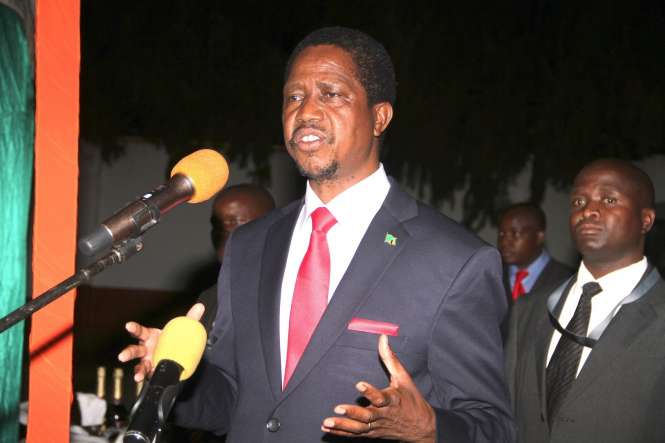Zambian Treasury bills are among the best deals in Africa, according to Standard Bank Group Ltd. That’s if you accept the government’s pledge not to overspend in the run-up to next year’s elections.
It’s an important caveat. President Edgar Lungu’s administration is currently paying more to borrow for one year than for five years, an anomaly known as an inverted yield curve that signals investors are more concerned about short-term repayment risks than the longer-term economic outlook. What’s more, Zambia has overrun its budget projections for the past three years and will probably do so again in 2015 as slowing growth and the cancellation of a new mining tax curb revenue, according to Moody’s Investors Service.
“Can it get worse? It could,” Yvette Babb, a Johannesburg-based emerging-markets strategist at Standard Bank, Africa’s biggest lender by assets, said by phone on Tuesday. “I’d like to believe that things will get better from here. It could prove to be one of the most attractive local-currency trades that’s available on the continent at the moment.”
Mine Tax
Yields on one-year Treasury bills have more than doubled in the past 36 months, reaching a record 24.25 percent at a sale on May 28, the highest after Malawi among African markets tracked by Bloomberg. Zambian five-year bonds yielded 24 percent at a sale on May 22.
Finance Minister Alexander Chikwanda is set to present budget amendments to parliament this month after the government agreed to abandon a royalty-only mine tax system introduced in January. That, coupled with lower copper prices, could cut state revenues by 2.3 billion kwacha ($320 million). Lower rainfall that hurt corn production is also curbing electricity supplies in the country that relies on hydro power for over 90 percent of its electricity generation.
Moody’s last week cut its outlook on Zambia’s Eurobonds to negative, citing increasing debt costs as one of the reasons. The economy will grow 5.8 percent this year, lower than a December forecast of more than 7 percent, Moody’s said. Borrowing costs have climbed as funding requirements grew and foreign appetite for government securities waned, Bank of Zambia Governor Denny Kalyalya said May 14.
‘Growth Potential’
“The yield curve reflects the current mismatch between short-term challenges and longer-term growth potential,” Irmgard Erasmus, a fixed-income analyst at Paarl, South Africa-based NKC African Economics, said in an e-mailed reply to questions on May 29. Accelerating inflation and fiscal strain may push Zambian yields even higher in coming months, she said.
“Short-term challenges aside, Zambia’s medium-term economic growth prospects remain robust, which will be sure to draw foreign interest,” she said.
While the economy of Africa’s second-biggest copper producer has strong growth potential, “lingering vulnerabilities” pose risks, including lower metal prices and a deficit that reached 6 percent last year, the International Monetary Fund said May 22.
Yields for Zambia’s $1 billion Eurobonds due in 2024 have dropped to 7.37 percent from a high of 8.39 percent shortly after they were sold in April last year.
The government may sell a third Eurobond this year as revenues fall short of targets, the merchandise trade account worsens, and foreign exchange reserves drop, Erasmus said. The country recorded a record 717.2 million kwacha trade deficit in April. Foreign reserves fell to $2.7 billion at the end of March, from $3 billion in December.
“There’s been a lot of bad news priced in there already,” Babb at Standard Bank said. “I’m inclined to believe that the policy mix has become slightly more constructive and the central bank has shown willingness to maintain a tight monetary policy stance.”
bloomberg.com

 JOIN DRIVERN TAXI AS PARTNER DRIVER TODAY!
JOIN DRIVERN TAXI AS PARTNER DRIVER TODAY!











